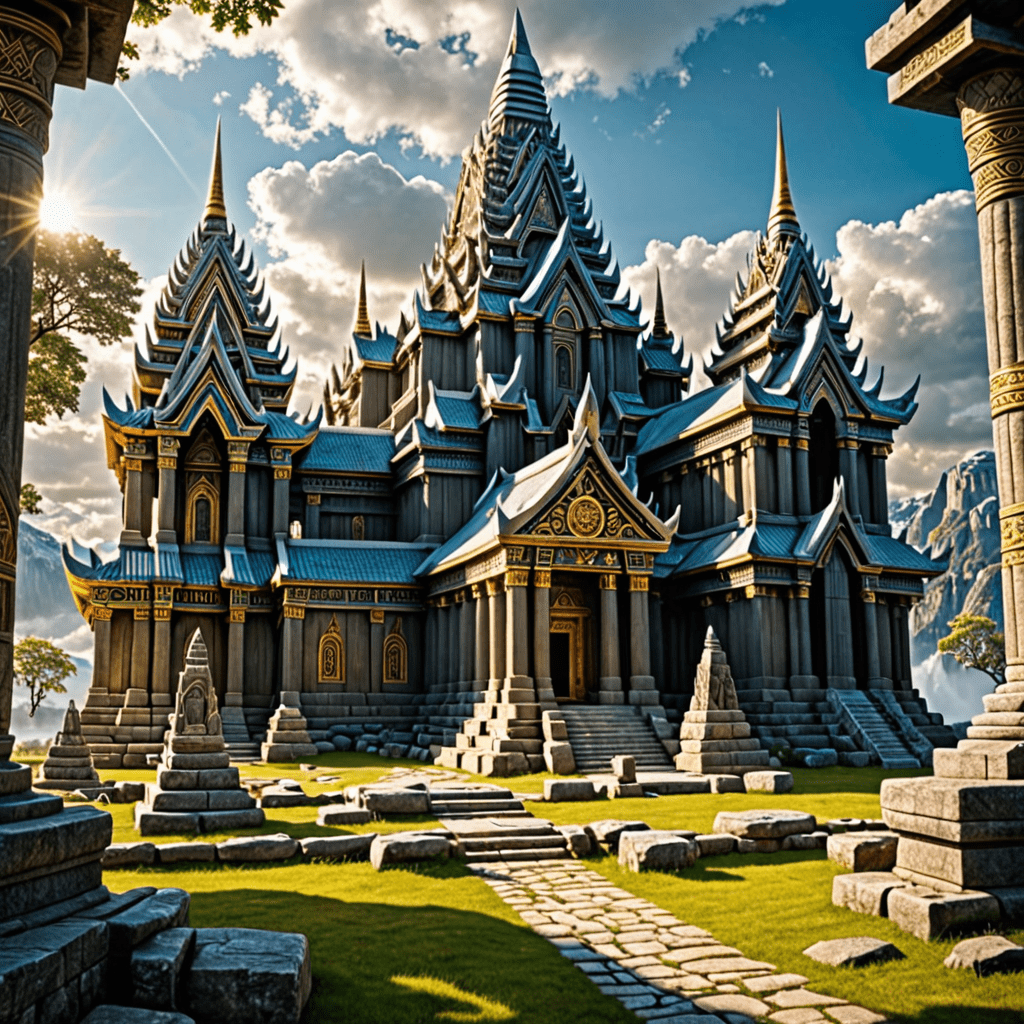The Role of Temples and Sacred Sites in Norse Mythology
1. Importance of Temples in Norse Mythology
In Norse Mythology, temples played a pivotal role as sacred spaces where gods and goddesses were worshipped and revered. These structures acted as a physical connection between the mortal realm and the divine realm, where rituals, sacrifices, and prayers were conducted to honor the deities.
2. Significance of Sacred Sites in Norse Beliefs
Sacred sites in Norse mythology were often natural landscapes such as mountains, forests, or water bodies that held spiritual significance. These sites were believed to be imbued with powerful energies and frequented by mythological beings, making them places of great reverence and awe for the Norse people.
3. Role of Temples and Sacred Sites in Norse Rituals
Temples and sacred sites served as the primary locations for religious ceremonies, including blót (sacrificial rites), feasts, and gatherings to honor the gods. These rituals were vital for maintaining the balance between the human world and the divine realms, ensuring prosperity and protection for the believers.
4. Connection between Temples, Sacred Sites, and Norse Cosmology
In Norse cosmology, the intertwining of temples and sacred sites with the physical and spiritual realms reflected the intricate web of relationships between gods, giants, elves, and other mythical beings. These locations were considered bridges that linked the worlds together, shaping the Norse understanding of existence and destiny.
FAQs about the Role of Temples and Sacred Sites in Norse Mythology
What are temples in Norse mythology?
Temples in Norse mythology were sacred spaces where rituals and offerings were made to the Norse gods like Odin, Thor, and Freyja. These temples played a crucial role in the religious practices of the Norse people.
What significance did temples and sacred sites hold in Norse mythology?
Temples and sacred sites were believed to be the dwelling places of the gods and served as a connection between the mortal world and the divine realm. They were places of worship, offering protection, guidance, and blessings to the Norse communities.
Were there specific rituals performed at Norse temples?
Yes, various rituals were conducted at Norse temples, including feasts, sacrifices, prayers, and ceremonies to honor and appease the gods. These rituals were vital in maintaining harmony between humans and the divine.
What were some famous sacred sites in Norse mythology?
Some well-known sacred sites in Norse mythology include Yggdrasil, the World Tree; Valhalla, the hall of slain warriors; and Mimir’s Well, a source of wisdom. These sites held immense importance in Norse cosmology and legends.


